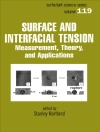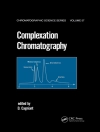Содержание
Preface xi
Chapter 1 Motivation 1
Prevalence of Infectious Disease 1
Prior Approaches 4
Scope of Coverage 4
Potential Objectives of a QMRA 5
Site-Specific Assessment 5
Ensemble of Sites 6
Secondary Transmission 7
Outbreaks versus Endemic Cases 7
References 10
Chapter 2 Microbial Agents and Transmission 15
Microbial Taxonomy 15
Eukaryotes 15
Prokaryotes 18
Viruses 20
Prions 22
Clinical Characterization 24
Microorganisms of Interest 27
Viruses 27
Bacteria 37
Protozoa 42
Transmission Routes 45
Inhalation 48
Dermal Exposure 50
Oral Ingestion 50
References 55
Chapter 3 Risk Assessment Paradigms 63
Chemical Risk Assessment: National Academy of Sciences Paradigm 63
Ecological Risk Assessment 67
Approaches for Assessing Microbial Risks 71
Background 71
The QMRA Framework 74
Hazard Identification 74
Dose–Response Assessment 74
Exposure Assessment 76
Risk Characterization 77
Risk Management 79
Development of the QMRA Framework and Processes 79
QMRA and the Safety of Water 82
QMRA, Food Safety, and the HACCP System 84
References 86
Chapter 4 Conducting The Hazard Identification (HAZ ID) 91
Identifying and Diagnosing Infectious Disease 92
Health Outcomes Associated with Microbial Infections 95
Sensitive Populations 100
Women during Pregnancy, Neonates, and Young Babies 101
Diabetes 102
The Elderly 102
The Immunocompromised 104
Databases for Statistical Assessment of Disease 106
ICD Codes 107
Waterborne and Foodborne Outbreaks 111
Epidemiological Methods for Undertaking HAZ ID 117
Controlled Epidemiological Investigations 118
HAZ ID Data Used in the Risk Assessment Process 119
Recommendations for Updating Quantitative Data for HAZ ID Information 121
References 122
Chapter 5 Analytical Methods and The QMRA Framework: Developing Occurrence and Exposure Databases 129
Introduction 129
Approaches for Developing Occurrence and Exposure Databases 132
Overview of Methodological Issues 134
Sampling Water 136
Sampling Surfaces and Food 138
Sampling Aerosols 138
Specific Techniques for Bacteria, Protozoa, and Viruses 140
Bacteria 140
Protozoa 142
Viruses 143
Molecular Techniques 145
Probes (FISH) 146
Typing 146
Metagenomics 147
PCR and Quantitative PCR 147
References 151
Chapter 6 Exposure Assessment 159
Conducting the Exposure Assessment 159
Characterizing Concentration/Duration Distributions 160
Random (Poisson) Distributions of Organisms 160
Estimation of Poisson Mean in Count Assay (Constant and Variable Volumes) 162
Count Assay with Upper Limits 163
Estimation with Quantal Assay 164
Goodness of Fit to Poisson: Plate Assay 168
Goodness of Fit: MPN 178
Confidence Limits: Likelihood 182
Implications for Risk Assessment 187
Consumption Distributions 214
Systematic Subpopulation Differences 221
Afterword 223
Appendix 224
Microsoft Excel 224
MATLAB 225
R 227
References 230
Chapter 7 Predictive Microbiology 235
Objective 235
Basic First-Order Processes and Deviations 236
Biological and Physical Bases for Deviations 236
Physical Removal 238
Types of Decay Processes 238
General Forms of Decay and Reasons for Nonlinearity 238
Spontaneous/Endogenous 240
Chemical Agents 241
Thermally Induced 243
Ionizing and Nonionizing Radiation 243
Predation and Antagonism 245
Types of Growth Processes 245
Mathematical Modeling of Growth Curves 246
Substrate Dependency 252
Structured Growth Models 255
Incorporation of Decay into Growth Models 256
Systems Biology Approaches 258
Dependence of Growth Parameters on Other Environmental Variables 258
Interacting Populations 258
Data Sources 260
References 263
Chapter 8 Conducting The Dose–Response Assessment 267
Plausible Dose–Response Models 268
Framework for Mechanistic Dose–Response Relationships 269
Exponential Dose–Response Model 271
Beta-Poisson Dose–Response Model 272
Simple Threshold Models 274
Negative Binomial Dose Distributions 277
Variable Threshold Models 278
Other Mixture Models 279
Biological Arguments for One-Hit Models 281
Empirical Models 282
Fitting Available Data 283
Types of Data Sets 284
Potential Impacts of Immune Status 298
Relationship between Dose and Severity (Morbidity and Mortality) 299
Morbidity Ratio (PD:I) 299
Mortality Ratio 303
Reality Checking: Validation 304
Validation: 1993 Milwaukee Outbreak 304
Use of Indicators and Other Proxy Measures in Dose–Response 305
Indicator Methods 305
Molecular Methods 307
Advanced Topics in Dose–Response Modeling 308
Dose–Response–Time Models 308
Physiological Models 313
Appendix 315
References 317
Chapter 9 Uncertainty 323
Point Estimates of Risk 324
Terminology: Types of Uncertainty 326
Sources of Uncertainty 327
Sources of Variability 328
Variability that is Uncertain 329
Approaches to Quantify Parametric Uncertainty 329
Likelihood 329
Bootstrap 330
Other Methods 330
Applications 332
Exposure Assessment 332
Dose–Response Assessment 338
Combining Parametric Uncertainty from Multiple Sources 344
Propagation Methods 344
Monte Carlo Analyses 347
Overall Risk Characterization Example 365
Second-Order Methods 368
Model Uncertainty and Averaging 370
References 373
Chapter 10 Population Disease Transmission 377
Introduction: Models for Population and Community Illnesses 377
Basic SIR Model 378
Incubation Period 386
Duration of Illness 388
Secondary Cases 389
Impact of Immunity 392
Outbreak Detection 393
References 397
Chapter 11 Risk Characterization and Decision Making 399
Introduction 399
Valuing Residual Outcomes 400
Classical Economics 400
DALYs and QALYs 404
Decision Making 407
Cost–Benefit Analysis 408
Multivariate Approaches 411
Other Aspects Entering into a Decision 412
Equity and Justice Aspects 412
References 413
Index 415












